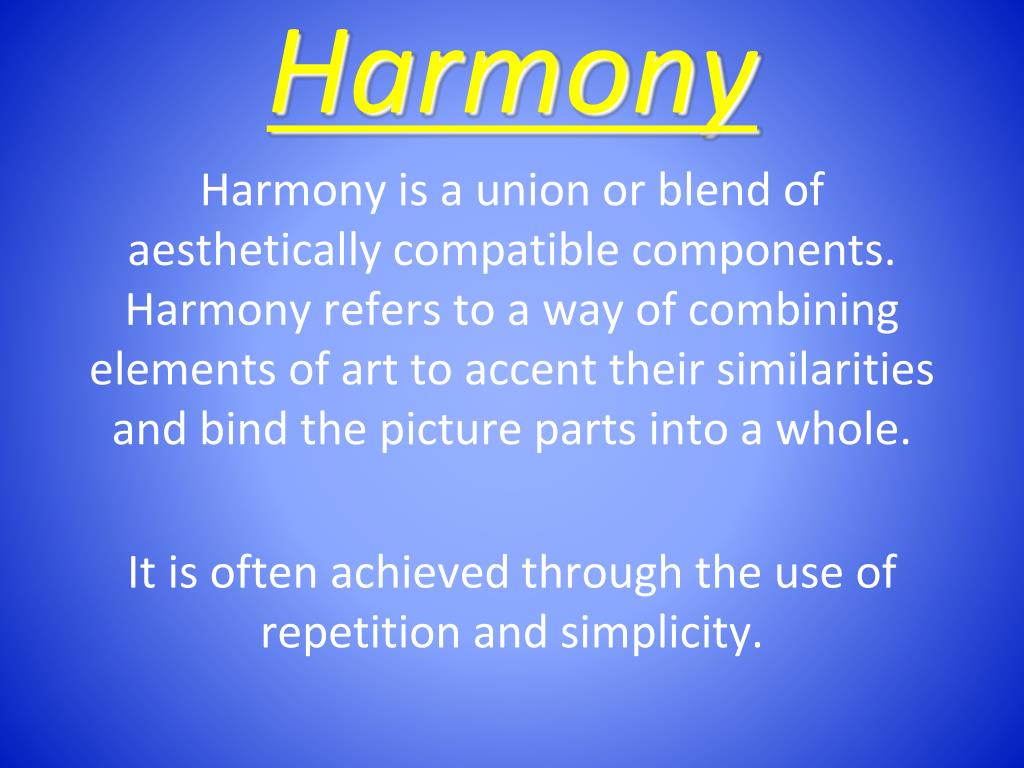

In the physiological approach, consonance is viewed as a continuous variable measuring the human brain's ability to 'decode' aural sensory input. Drawing both from music theoretical traditions and the field of psychoacoustics, its perception in large part consists of recognizing and processing consonance, a concept whose precise definition has varied throughout history, but is often associated with simple mathematical ratios between coincident pitch frequencies. Harmony as a perceptual property is one of the core concepts underlying the theory and practice of Western music.

Harmony is broadly understood to involve both a "vertical" dimension (frequency-space) and a "horizontal" dimension (time-space), and often overlaps with related musical concepts such as melody, timbre, and form. These effects are variously identified, defined, and categorized as harmonic objects like chords, textures and tonalities.

More concretely, harmony often refers to the effects created by distinct musical pitches or tones coinciding with one another. In music, harmony is the process by which individual sounds are joined or composed into whole units or compositions. Barbershop quartets, such as this US Navy group, sing 4-part pieces, made up of a melody line (normally the lead) and 3 harmony parts.


 0 kommentar(er)
0 kommentar(er)
